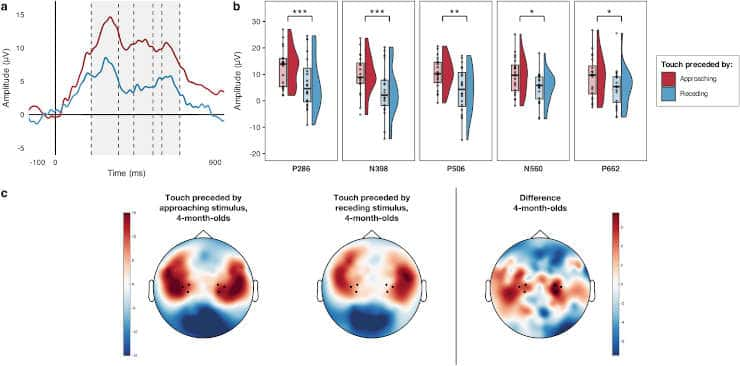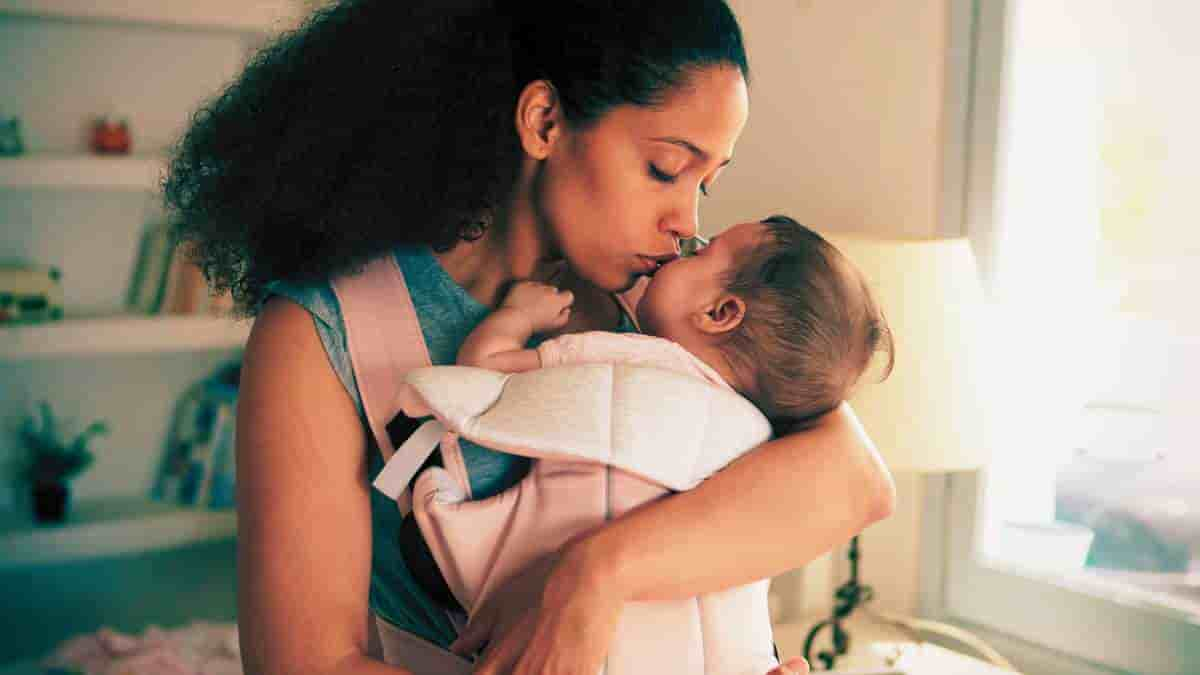According to new research from the University of Birmingham, babies as young as four months old can understand how their bodies interact with the environment around them. The findings shed new light on how self-awareness develops.
Birmingham BabyLab experts showed babies a moving ball on a screen that moved towards or away from them. While their brain activity was being recorded, the babies were given a ‘touch’ (a little vibration) on their hands when the ball was nearest to them on the screen. Goldsmiths (University of London) was used to collect data for the study.
The researchers discovered that babies’ somatosensory (tactile) brain activity increases at as early as four months old when an object moves toward them before a touch.
Peripersonal Space
The findings suggest that even in the first few months of life, before babies have learned to reach for objects, the multisensory brain is wired to make connections between what babies see and what they feel.
“This means they can sense the space around them and understand how their bodies interact with that space. This is sometimes referred to as peripersonal space,”
Dr. Giulia Orioli, a Research Fellow in Psychology at the University of Birmingham who led the study, said.
“Of course, humans do this all the time as adults, using our combined senses to perceive where we are in space and making predictions about when we will touch an object or not. But now that we know that babies in the early stages of their development begin to show signs of this, it opens up questions about how much of these abilities are learned or innate,”
added Orioli.
Exploring Multisensory Abilities

Credit: Sci Rep 13, 19300 (2023). doi: 10.1038/s41598-023-45897-4
The researchers also investigated how an unexpected ‘touch’ would impact some of the study’s older babies. They discovered that when an eight-month-old baby touched their hand, and the ball on the screen moved away from them, the babies’ brain activity showed signals of surprise.
The older babies’ surprise responses indicate that they did not expect the touch due to the visual direction the object was moving in.
“This indicates that as babies proceed through their first year of life, their brains construct a more sophisticated awareness of how their body exists in the space around them,”
said Andrew Bremner, Professor of Developmental Psychology.
The researchers hope to continue this study with younger and older volunteers in the future. Adult research can shed light on the types of brain activity that infants are developing. They are also hoping to be able to see if there are early signs of these “multisensory” abilities in newborn babies.
“It is a challenge working with newborns, as they spend such a large portion of their time sleeping and eating, but we are starting to have some success working with this age group, and it is going to be fascinating to see if babiesonly a few days old have the foundations of a sense of their bodies in space. If so, it could be that we are looking at the origins of human consciousness,”
Dr. Orioli concluded.
Abstract
We asked whether, in the first year of life, the infant brain can support the dynamic crossmodal interactions between vision and somatosensation that are required to represent peripersonal space. Infants aged 4 (n = 20, 9 female) and 8 (n = 20, 10 female) months were presented with a visual object that moved towards their body or receded away from it. This was presented in the bottom half of the screen and not fixated upon by the infants, who were instead focusing on an attention getter at the top of the screen. The visual moving object then disappeared and was followed by a vibrotactile stimulus occurring later in time and in a different location in space (on their hands). The 4-month-olds’ somatosensory evoked potentials (SEPs) were enhanced when tactile stimuli were preceded by unattended approaching visual motion, demonstrating that the dynamic visual-somatosensory cortical interactions underpinning representations of the body and peripersonal space begin early in the first year of life. Within the 8-month-olds’ sample, SEPs were increasingly enhanced by (unexpected) tactile stimuli following receding visual motion as age in days increased, demonstrating changes in the neural underpinnings of the representations of peripersonal space across the first year of life.
Reference:
- Orioli, G., Parisi, I., van Velzen, J.L. et al. Visual objects approaching the body modulate subsequent somatosensory processing at 4 months of age. Sci Rep 13, 19300 (2023). doi: 10.1038/s41598-023-45897-4
